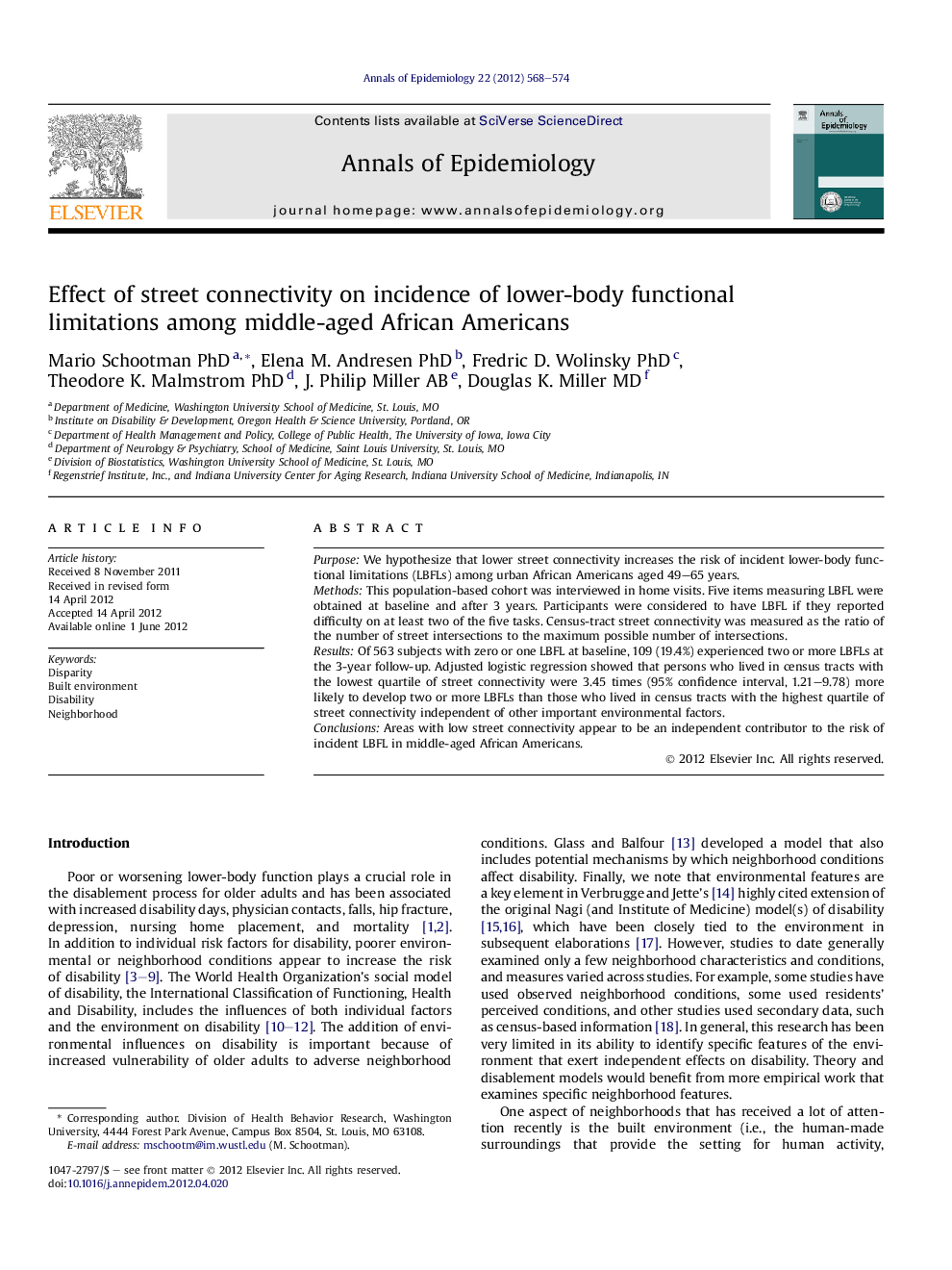| Article ID | Journal | Published Year | Pages | File Type |
|---|---|---|---|---|
| 3444340 | Annals of Epidemiology | 2012 | 7 Pages |
PurposeWe hypothesize that lower street connectivity increases the risk of incident lower-body functional limitations (LBFLs) among urban African Americans aged 49–65 years.MethodsThis population-based cohort was interviewed in home visits. Five items measuring LBFL were obtained at baseline and after 3 years. Participants were considered to have LBFL if they reported difficulty on at least two of the five tasks. Census-tract street connectivity was measured as the ratio of the number of street intersections to the maximum possible number of intersections.ResultsOf 563 subjects with zero or one LBFL at baseline, 109 (19.4%) experienced two or more LBFLs at the 3-year follow-up. Adjusted logistic regression showed that persons who lived in census tracts with the lowest quartile of street connectivity were 3.45 times (95% confidence interval, 1.21–9.78) more likely to develop two or more LBFLs than those who lived in census tracts with the highest quartile of street connectivity independent of other important environmental factors.ConclusionsAreas with low street connectivity appear to be an independent contributor to the risk of incident LBFL in middle-aged African Americans.
